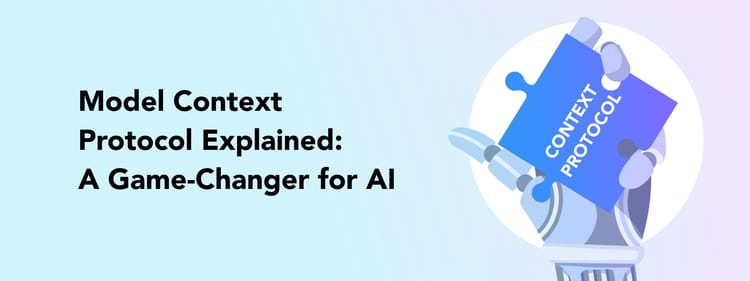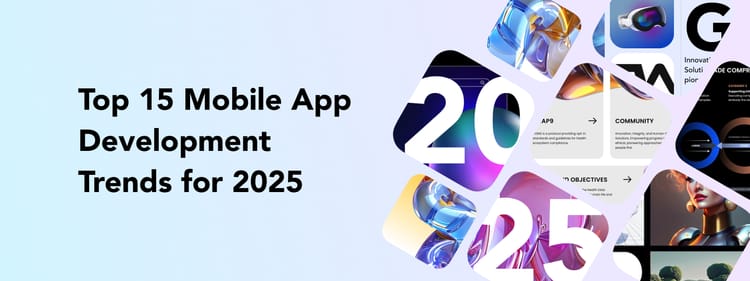Many of us are not so eager to spend hours in the shopping mall on the weekends. No wonder why — it is way easier to scroll through items online and get them delivered right to your home. What’s more, many users prefer to shop via their smartphones instead of computers or laptops. This practice is so common now that it even has a name: M-commerce or mobile commerce.
So, if you are thinking about getting a mobile app for your e-commerce business, it's high time to do so. Let’s take a look at some fresh statistics to learn more about the perspectives of an e-commerce application.
Some m-commerce stats to get you excited
Numbers can say more than a hundred words. Consider these five facts about the current m-commerce market:
- It is predicted that in 2022 mobile e-commerce sales will reach 431 billion dollars as compared to 362 billion in 2021. Quite a development, isn’t it?
- As of late 2021, around one-third of US Internet users made a purchase via their smartphones each week. In Malaysia and South Korea, this rate is as high as almost half of the users.
- Four in five (82%) Australians shop online via mobile devices.
- Around half of the users (48%) prefer to shop on mobile devices. The number goes higher to 59% for millennials.
- Four in ten UK users make weekly purchases on their phones.
Does getting a mobile application seem reasonable enough? For us, it sure does. Making just a good m-commerce app is not enough — your solution needs to be convenient, user-friendly, and, what’s more, stand out on the market. While the first two are quite clear, what about standing out on the market? How can one do it? By introducing cutting-edge features and ecommerce new trends.
Top 5 e-commerce app trends of 2022
Let’s explore current ecommerce industry trends that can make your app a top one.
One-click orders for faster checkouts
The reason why so many people choose to shop online is the convenience of it. You can just open a website or an app while sitting on the couch and get your product delivered right to your door. What’s even better is placing an order with one click only.
Sometimes, ordering via an app is a whole quest: the user has to manually enter lines and lines of information, from their name and credit card details to their shipping address. No wonder that, according to studies, up to 84% of “add-to-carts” never result in a purchase.
To make the checking out process in your app as smooth as possible, we recommend you introduce a one-click order feature, one of the current trends in ecommerce. The best way to do so is to allow users to enter their data once and for good when filling in their profiles. In such a way, this information will be stored in the app and is automatically added when making a purchase. Voilà — your users can buy any item with one click or, better said, one tap. Amazon's one-click pay is one of the pioneering examples of this trend.
App personalization for making users feel special
When looking into new trends in ecommerce, you will likely find personalization on most of the lists. With so many online retailers making similar, template-like solutions, users are craving to see something unique and fitting their expectations. That’s when mobile app personalization steps in.
There are several ways to personalize your mobile app. These might include
- product recommendations based on the user’s history
- items matching a particular product
- tailored content
- personal promotions, offers, and discounts
- customized push notifications
Personalization doesn’t only come down to higher user satisfaction rates. By offering your customers exactly what they are looking for and predicting their desires, you are increasing your sales, improving user retention, and making the in-app experience more engaging.
Video content for adding some dynamics
Enhancing your mobile app with video content is among the emerging ecommerce trends. When reviewing and comparing products, your customers want to know as much as possible about them. Detailed descriptions, customer reviews, and photos help users understand if the item is what they are looking for. Videos will take this decision-making one step further.
Videos can make your app’s content more diverse and engaging. After all, a bit of dynamics is a sure way to capture attention and demonstrate the product in the best light. Additionally, video presentations might seem more reliable than photos as customers can see how a product looks in real life and unedited. As a result, you are creating more open, honest images of the product as well as giving your users a message of transparency and trustworthiness.
Apart from demonstrating the products, you can also film video reviews. For example, you can invite an expert to talk about the pros and cons of a specific product or compare two similar items. That’s one more method of increasing user engagement and stimulating sales.
Subscriptions for gathering a community
Customer retention is a headache for many e-commerce apps. How do you motivate users to come back to your shop and make more purchases? Introducing a subscription model is the answer.
Becoming a subscriber should bring users certain perks, like discounts or unique offers. That’s why you need to consider what advantages can encourage users to become your subscribers. Examples might include membership discounts, free shipping offers, early access to items, price change notifications, and others.
Additionally, a subscription model is associated with forming a community around the app. You can share content, like thematic sets of products, or recommendations on purchases. By doing so, you are transforming customers or even potential customers into brand advocates. Needless to mention the skyrocketing sales rates.
Live selling for showing products for what they are
Social media is the basis of online interactions right now. Everything is happening rapidly and live, so it’s best if your app is not lagging behind. Let’s explore one of the latest trends in ecommerce: live selling.
Live selling is the practice of demonstrating products during live streams. A host, who can be a store’s manager or an influencer, guides the users through items in stock. During such live streams, hosts usually show how to use products, discuss their properties, give details on how to make a purchase, and so on.
Live selling stands on a line between shopping and entertainment. Your viewers might join a live stream just to pass the time and see what’s in stock. At the same time, they are getting more information about the products and find interest in buying them. Live selling is becoming one of the major ways to maintain high user engagement levels.
How to build a live selling app?
Omnichannel retail for reaching out to more customers
Let’s talk about one of the retail ecommerce trends that don’t come down to mobile apps only. In fact, this trend is all about having several different channels to market your products. Most online retailers now have both a website and a mobile app to reach out to a wider audience and offer users more convenience. For many customers, it is preferable to look up products on the website but check their delivery progress from a mobile app. Some want to check out the items in the offline store but choose to get a delivery from the application.
Long story short, it is better to give your users some options. The more the better. Of course, you don’t have to hurry and open an offline store if it is not on your agenda. Representing your brand on social media and allowing sales through those platforms (for example, Instagram’s in-app shopping) can be more than enough.
AR for virtual fittings
One of the online shopping problems is being unsure about what the item will look like in real life. Of course, our phones cannot just teleport a table or shirt for you to check out, but they can make them appear in your house in some other way. The key is one next ecommerce trend: augmented reality.
With the aid of AR, users can see an image of any product projected in a real-life environment. For example, take a look at the app concept we created for a clothing brand. Here, users can check out how a certain item, like glasses or trainers, looks on the model. Thus, there are no abstract photos of clothes with a white background that say nothing about how they fit.
Augmented reality in e-commerce doesn’t come down to fashion. For example, the IKEA Place app makes the furniture appear in the users’ houses, so they can understand how it suits the interior.
AR has a huge potential for many e-commerce products — think of 3D models that can be explored from any angle, fit in any space, or virtually “tried on” via the user’s photo or video. Thus, you can offer virtual fitting rooms right in your app.
Chatbots for providing immediate assistance
One of the best ecommerce trends is connected with the support users might need while shopping. Sometimes, customers can have questions about the ordering process or item availability. One way to get assistance is to reach out via email or phone. A better one is to ask the chatbot.
A chatbot is a convenient and cost-effective alternative to support agents. They can also be a great addition when support service is unavailable or for solving simpler issues. 68% of responders in a recent survey like that chatbots are so quick to answer — that’s the biggest advantage of this feature.
You might think of some basic requests your customers might have, like questions about payment and delivery or finding the right size or color. With dedicated chatbot APIs, it’s easy to integrate a chatbot into your app to answer all your users’ questions or redirect them to human agents when needed.
Smart recommendations for cross-selling and upselling
AI can be used in e-commerce in numerous ways, one of which is cross-selling. With the help of AI and machine learning, your app can suggest to users products related to their purchases. For example, suppose a user is looking for a coffee table. Under the very item, your app can offer “similar products” — other models of coffee tables. That's a pretty popular practice you can observe on many websites and apps.
What about suggesting your users not only similar but matching products too? Taking the same example with the coffee table: you can show your users a coach or some decoration items to put on that table. As a result, your users get a customized list of products that have a higher chance to interest them than just a random set.
Personalization is what many shoppers are craving right now. Any shopping app is filled with thousands and thousands of options — we are overwhelmed by choices. Offering a smaller selection of products that go together and suit one’s taste is a key to satisfying your customers’ needs.
Mobile payments for smooth transactions
One-click orders are not the only ecom trends that make mobile shopping easier. Contactless mobile payments are a must for convenient checkout too. What’s easier: entering your credit card number or clicking “Pay with Apple Pay/Pay with Google Pay?” The answer is pretty clear.
Statistics give us an insight into the shoppers’ preferences: Gen Z and millennials are more avid users of Apple Pay or Google Pay as compared to other generations. And we all know who are the trendsetters these days. If you want to appeal to these demographics, having a contactless payment option in your app is a must.
Remember that the best you can do for your users is to give them options, including various ways to pay. Today, contactless payment is shifting from being a trend to becoming something users expect by default, so take care of their comfort and introduce Apple and Google Pay in your application.
Takeaway
These are the top 10 trends in ecommerce industry you can easily introduce in your new application. We selected down-to-earth and applicable current ecommerce trends — those you can implement and, what’s more, those that will be indeed practical for the users and not just there for the sake of being trendy. After all, every feature is there for the users’ convenience.
Mindfully following best practices and trends in ecommerce during full-cycle mobile app development is a sure way to transform a just-so-good app into a truly excellent one, the one users will want to spend hours on rather than close after meeting an inconvenience.
FAQ
What is the future of the e-commerce industry?
The future of e-commerce lies in optimizing the shopping process. More payment options, one-click orders, and chatbots are the trends bringing convenience to the e-commerce app users.
What is the latest trend in the e-commerce industry?
Personalization, live selling, and augmented reality are among the latest e-commerce trends.
What are some of the e-commerce current trends?
Some of the new trends in retail include omnichannel selling, app subscriptions, and in-app video content.





